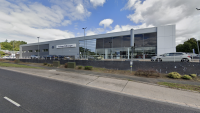A seismic shift in the way new cars are sold is under way.
In January, Mercedes-Benz became the first international manufacturer to switch to the agency model in the UK and others are expected to follow suit.
Early reports from dealers who have been moved from the franchise model to the agency one are mixed, though.
The new model exposes them to less risk but also less upside. Without the latitude to negotiate on price with customers, dealers fear closing fewer sales.
Soon-to-be agency dealerships are therefore exploring additional revenue streams — and for some, this means making their first concerted foray into the used car market.
From one brand to many
The used car market has long been profitable terrain for franchise dealer groups.
OEMs have less control over what they can and cannot do in this area of their business, and dealers can still leverage the manufacturer’s brand name and reputation.
But dealers starting a used car business from scratch, or moving from selling one brand to many, will face considerable challenges.
The steepest learning curve will be for dealers who have previously sold just one brand.
The challenge isn’t that the cars are used, as many dealerships will be familiar with selling second-hand vehicles – smaller franchise dealers in particular often already sell part-exchanged cars as it is an important source of income.
Instead, the challenge lies in the firms’ narrow brand expertise.
A company selling new Volkswagens, for example, knows its Polos and Golfs inside and out from their pricing to their engineering, so is well placed to sell any used Volkswagens part-exchanged with it.
Yet venturing into the used car market means dealing with the expectations of customers who will want to choose from a wide variety of manufacturers.
These are not insurmountable problems by any stretch, and it is a big opportunity for the business to widen its customer base beyond brand-loyal drivers.
However, dealers will need to get up to speed quickly on a whole range of brands and understand the price and selling points for each.
And that means navigating the supply chain differently to ensure they can acquire the stock they need, and at a price that will allow them to make sufficient profit when it is sold on.
Previously, dealers may have focused on selling part-exchanges, but that won’t be sufficient to ensure a constant supply of stock or a broad-enough range of vehicles.
Dealers venturing down this road will also find themselves facing a lot of competition when it comes to acquiring vehicles.
This is particularly acute at the moment as the used car sector continues to wrestle with stock shortages. This problem is easing, but will remain a pressure point this year.
Getting customers through the door
Longstanding dealers will have a dedicated customer base already, but that won’t be enough to ensure the success of the newly launched used car side of the business.
Quickly building a reputation for trust will be critical, especially for those who stake a big outlay on their used car stock.
While new car buyers rightly assume that any vehicle they buy will be free of mechanical defects, this isn’t true for used buyers, who often need more convincing that the car won’t need expensive repairs or replacement parts soon.
Building credibility by partnering with a trusted and recognisable national brand that acknowledges you as an approved dealer in its network is one way to attract customers who aren’t yet familiar with your company name.
Acquiring a stamp of approval from such an organisation will highlight you as a trustworthy dealer who has high standards of customer service.
This sort of partnership may also give you access to independent vehicle inspections, which can prove the quality and working order of your stock.
Such a partnership is also a convenient way of sourcing other products, such as warranties and breakdown cover, which can be great add-ons for your customers.
Dealers who sell new cars may already offer warranties but will need to expand that product range to cover second-hand models.
Once those customers are through the door and about to drive away, the dealer already needs to be thinking about retention.
Historically, new car dealerships have offered vehicle servicing as a way to keep their customers coming back year after year while also providing a handy revenue stream.
This is a great way of maintaining relationships with customers on the used side, too.
However, it will create new operational demands, as it means servicing a wider variety of cars. It will involve sourcing more parts, therefore navigating yet more supply challenges.
Life after franchise
The agency model is already transforming the way some dealerships do business. And if more OEMs do as expected and copy Mercedes, then there will be a lot of dealerships looking for additional revenue streams.
While the agency model may not be favoured by all dealerships, for those willing to dip their toe in new ventures, it may present an opportunity for business growth and expansion.
The key is to think early about how you will acquire your vehicles (and parts for those businesses that will offer servicing) and build a team of staff who have sufficient experience and knowledge of the used car market and its broad range of brands.
But once the cars are bought and the team is ready, you need to build confidence in your potential new customers to get them through the door — so don’t overlook the benefits of a partnership with a household name such as the AA.
In the same way that your OEM brand attracts customers to your new car division, so will a partnership with a trusted national name.
There’s certainly a lot to think about — but it can all add up to help new agency dealers make a seamless transition to life after franchise.



































